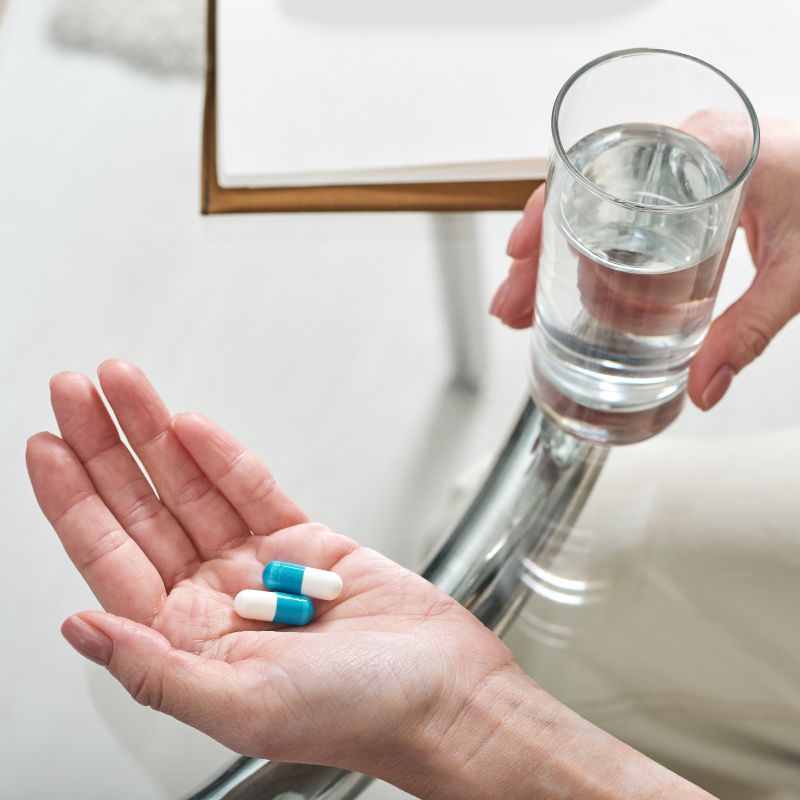What is EMDR?
EMDR, or Eye Movement Desensitization and Reprocessing Therapy, was invented in the late 80s by Dr. Francine Shapiro.
She had been having a stressful day, so she took a walk on a beautiful, tree-lined trail. She noticed her eyes sweeping back and forth across the path from tree to tree.
After her walk, she noted feeling less stressed out and had a better sense of her feelings. This experience piqued her curiosity, and she wondered whether her eye movements had anything to do with the shift in her feeling state (spoiler alert: she was on to something big!).
EMDR therapy has taken on many iterations and has undergone extensive evidence-based research, including many randomized controlled trials.
If you’re like most people who have heard of EMDR or seen it in movies, you’re probably picturing a therapist waving their pointer finger from side to side in front of the client so that the client’s eyes follow it eliciting those titular eye movements.
While EMDR therapy is what we call the treatment, it is a bit of a misnomer. Eye movements are not necessary for successful EMDR but can be replaced with other types of alternating Bilateral Stimulation (referred to as BLS). This can be in the form of alternating tones in the ear using earphones, alternating tactile sensations, or gentle tapping on either side of the body. Alternating bilateral stimulation activates both brain hemispheres and has a calming effect. BLS also wakes up our memory networks and allows us to work with them in treatment.
Although EMDR was initially studied in survivors of trauma and those with PTSD, EMDR can be helpful for a wide range of issues, including depression, anxiety, addiction, and eating disorders.
EMDR combines many different components from other therapy modalities, including psychodynamic and Cognitive Behavioral Therapy (CBT).
What Should I Expect in EMDR?
EMDR therapy consists of 8 phases. Below is a brief description of each:
Phase 1:
A process most people have experienced in traditional psychotherapy. In this phase, the client and therapist discuss which memories relate to the presenting issue that brought them to therapy and decide together where to begin the reprocessing.
Phase 2:
Prepares the client for reprocessing and helps them develop adaptive coping strategies to tolerate any stress or discomfort that accessing these memories may cause.
Phase 3:
The clinician helps the client activate the memory and assesses how disturbing it is using a Subjective Unit of Disturbance Scale (SUDS). This is done for many reasons, but the most important reason is so that the therapist can track the client’s progress. As the memory is reprocessed, the SUDS will gradually decrease and be zero by the end of treatment. Phase 3 is also used to assess how the memory has impacted this person’s belief about themselves (their negative cognition – hello, CBT!) and what they would prefer to believe about themselves (their positive cognition).
Phase 4:
Also called “Desensitization,” begins, as does all the Bilateral Stimulation (BLS). The therapist asks the clients to bring up the memory and then administers a set of BLS using the client’s preferred method (visual, auditory, or tactile). After one set, the therapist asks the client what is coming up for them and what they’re noticing in their thoughts, emotions, and bodily sensations.
What happens in Phase 4 is where EMDR differs so significantly from other therapy modalities. When BLS is administered, the client’s memory networks can take them anywhere, which is okay. Whatever comes up in EMDR comes up in EMDR. There is not a lot of coaching, interpretation, or guidance from the therapist during this phase. This may seem counterintuitive to therapy, but EMDR posits that the brain knows what it needs to do to reprocess and heal, and so that is what we allow it to do during reprocessing.
The majority of time in EMDR therapy is typically spent in Phase 4. If you’re curious, here is the master herself, Dr. Shapiro, doing EMDR with a client in all her 90s glory:
https://www.youtube.com/watch?v=bWf39Pqcoqg
After the client only reports positive or neutral feedback, the therapist guides them back to the target memory and assesses their SUD or level of disturbance while holding that memory in focus. If there is no longer any disturbance, the therapist moves on to phase 5.
Phase 5:
The therapist works with the client to install their positive cognition.
Phases 6, 7, & 8:
These include scanning the body for any residual tension, closing the session, and re-evaluating when necessary.
Our EMDR Therapists Are Here to Help
EMDR therapy is a highly collaborative, safe, and well-researched process and can be really helpful in various ways. If you’re ready to get back to feeling like you and want to speak with one of our therapists trained in EMDR in Bucks County, Contact Us today!



